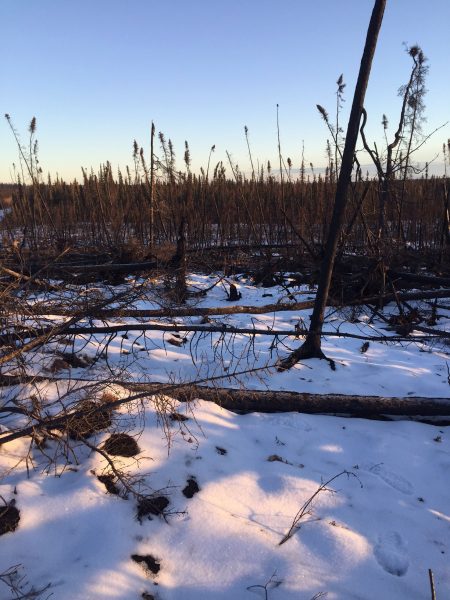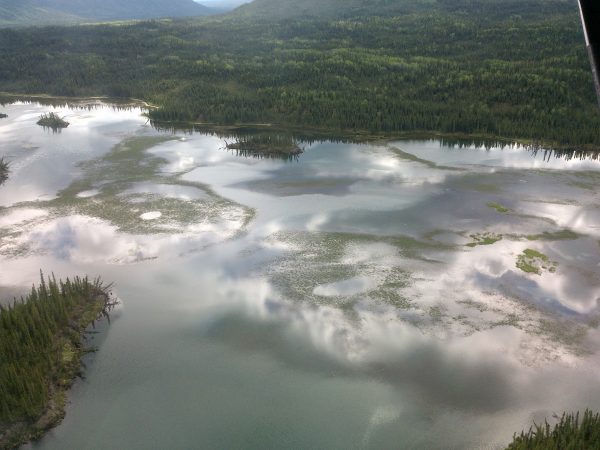Climate change limits access to subsistence resources
November 16, 2016
Jeff Richardson
907-474-6284

Download text and photo captions here.
Climate change is creating a variety of new obstacles for Alaska subsistence hunters, but access — not threats to wildlife — is perceived as the biggest challenge, according to a recent study.
Those results, gathered from University of Alaska Fairbanks-led interviews from four rural indigenous communities, were published last month in the science journal Climatic Change. Of the 47 important relationships identified between climate change and the availability of subsistence resources, 60 percent focused on hunter access. That far outpaced resource distribution (28 percent) and wildlife abundance (13 percent) among the responses.
Todd Brinkman, the lead author of the study, said respondents in Fort Yukon, Venetie, Wainwright and Kaktovik all reported growing challenges accessing wildlife during the past 30 years. They included more rotten ice on oceans, rivers and lakes; erratic conditions during the longer “shoulder seasons” between summer and winter; irregular changes in river hydrology hindering navigability during the summer; and more prevalent wildfires, which wipe out long-established traplines.
“It’s just a more unstable and unpredictable environment now,” said Brinkman, an assistant professor at the UAF Institute of Arctic Biology.

The findings may emphasize the need for a new focus by resource managers looking at challenges for subsistence hunters in the North. Much of the research emphasis has previously been on how climate change could affect key wildlife populations, such as caribou, moose and sea mammals.
Brinkman said the survey results add to a growing understanding that getting access to traditional food sources could be a more significant problem as the climate shifts.
Tom Paragi, a wildlife biologist with the Alaska Department of Fish and Game, said that such findings could significantly influence management policies focused on abundance. He agreed that the ability to reach important hunting areas is a key consideration as the state warms.
“Scientists have been trying to forecast abundance based on climate scenarios for about a decade, but now we’re considering access a lot closer in management programs,” he said.
The data was collected starting in 2010, when indigenous hunters were interviewed about their perception of climate-driven trends in the environment. Those 71 interviews pointed to a common view in all four villages that reaching subsistence resources has become more challenging.
“I don’t think it’s a regional issue,” Brinkman said. “I think it’s something we can extrapolate across the state.”

Brinkman said the next step in the continuing study will be to gather more empirical evidence and better quantify the extent and characteristics of changing access. Using NASA remote sensing imagery, the research team is working to determine whether the changes are an anomaly or part of a long-term trend. They’re also collecting more specific data from hunters about the changing environment they are facing and how it affects their ability to reach resources.
Researchers want to better understand how often such problems occur, since the ability to make adaptations will be depend on whether access is a concern occasionally or regularly.
“A lot of climate change stuff is out of local control, but if they’re aware of the trajectory and patterns of change then they can better adapt,” Brinkman said.
Along with Brinkman, the research team included UAF researchers F. Stuart Chapin III, Gary Kofinas and T. Scott Rupp. Winslow Hansen of the University of Wisconsin and Shauna BurnSilver of Arizona State University, who were both previously affiliated with UAF, also contributed to the study.
ADDITIONAL CONTACT: Todd Brinkman, 907-474-7139, tjbrinkman@alaska.edu


